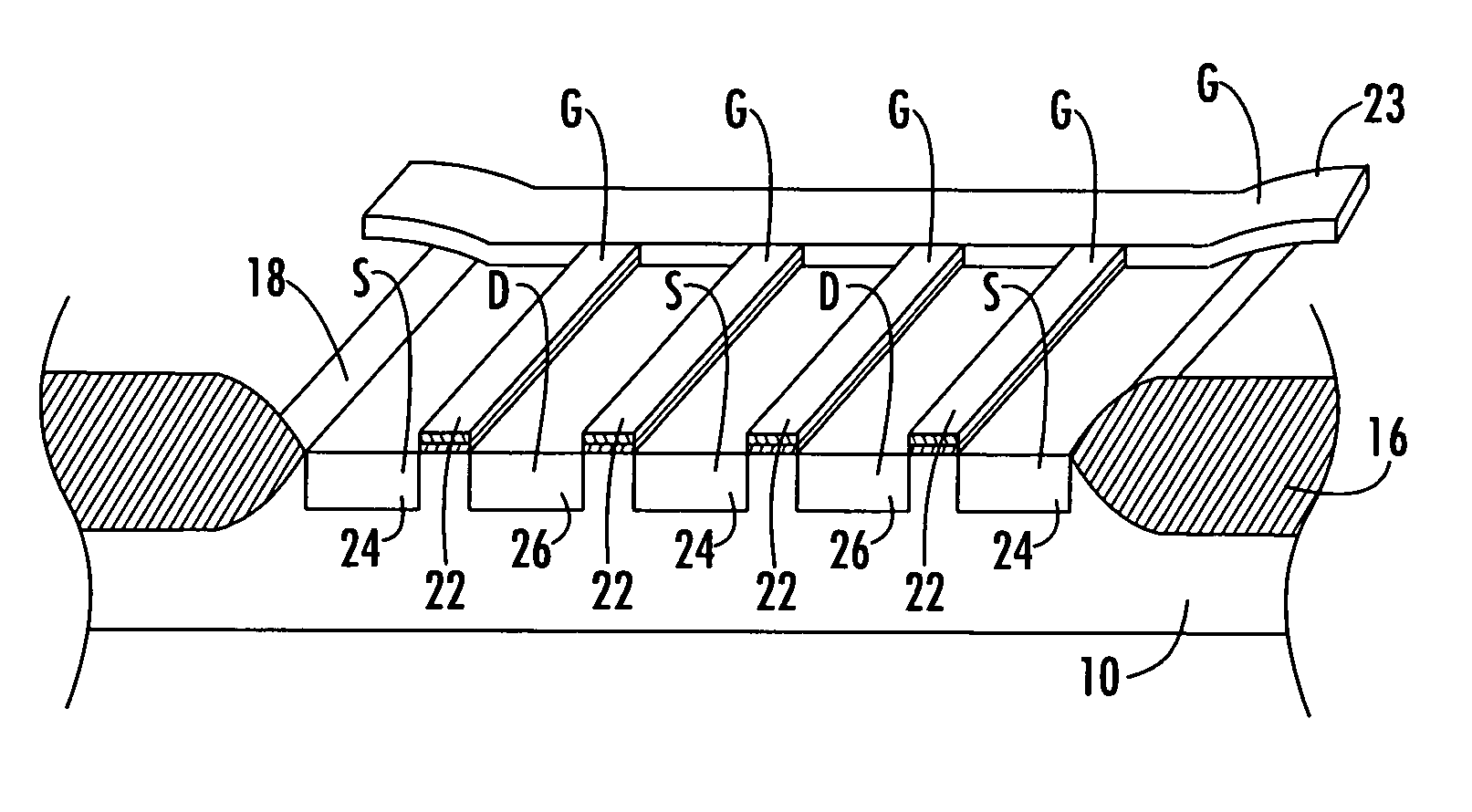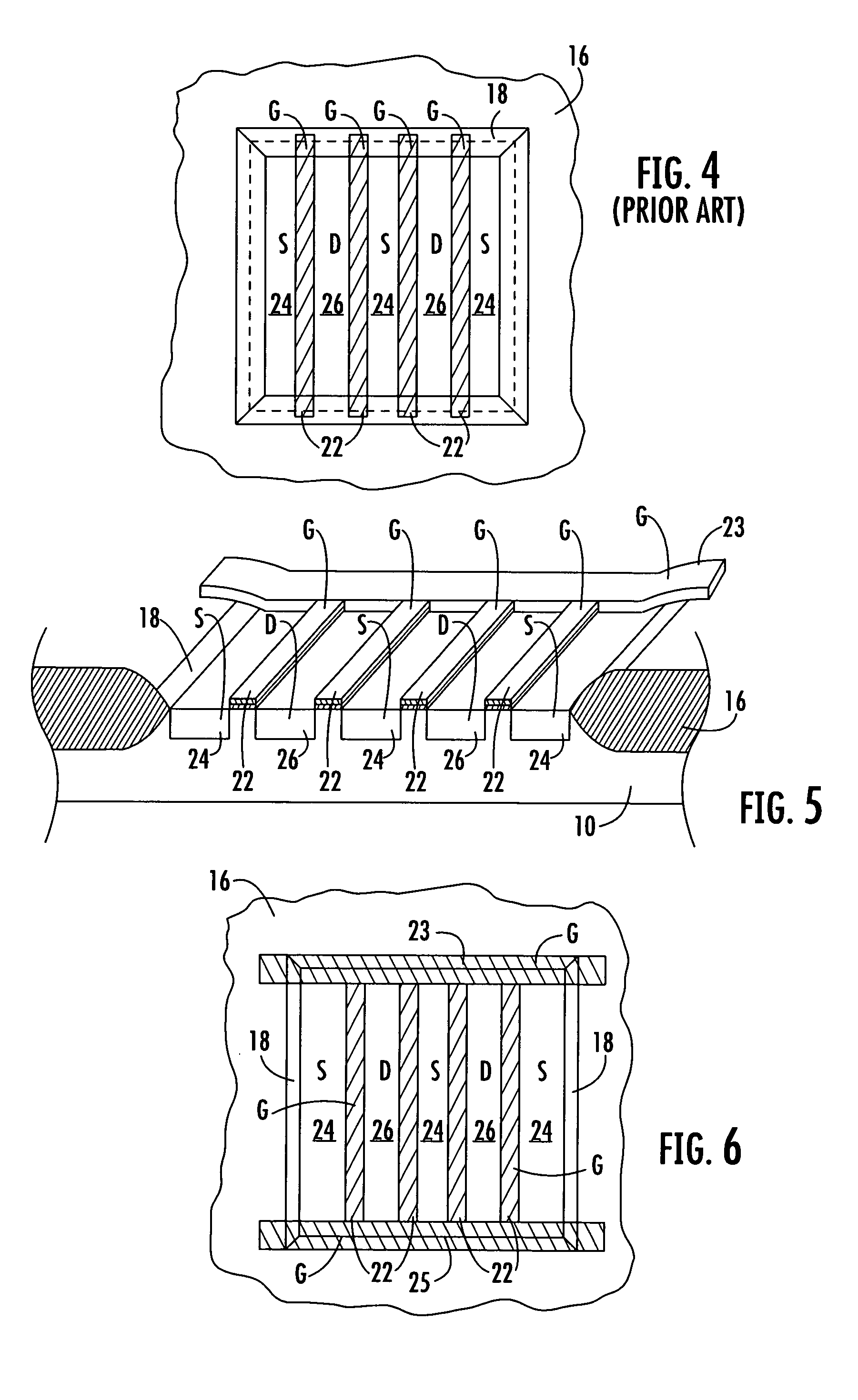ESD structure
a technology of electrostatic discharge and structure, applied in the direction of semiconductor devices, semiconductor/solid-state device details, electrical apparatus, etc., can solve the problems of several defects produced during locos processing, weak oxide growth over the region of the region, and the edge of the isolation of defects, etc., to achieve more robust esd performance
- Summary
- Abstract
- Description
- Claims
- Application Information
AI Technical Summary
Benefits of technology
Problems solved by technology
Method used
Image
Examples
Embodiment Construction
[0027] An IGFET, according to the present disclosure, having a similar structure as that shown in FIG. 4 is illustrated in FIGS. 5 and 6. A plurality of first gate portions 22 lie on an insulative layer 21 in the device region 20 and separates a plurality of sources 24 and drains 26. A pair of opposed second gate portions 23, 25 extend from the LOCOS 16 over the bird's beak 18 onto the device region 20 of the substrate 10. The first gate portion 22 extends between the second gate portions 23, 25. The source regions 24 and the drain regions 26 have their lateral edges displaced from the edge of the device region 20, LOCOS 16 and bird's beak 18. The gate material may be polycrystalline silicon, for example.
[0028] The device of FIGS. 5 and 6 are produced using a self-aligned gate technique. By using the gate portions 22, 23, 25 in the self-alignment process, the first gate portion 22 defines the length of the channel regions 28, while the opposed gate regions 23, 25 define the width o...
PUM
 Login to View More
Login to View More Abstract
Description
Claims
Application Information
 Login to View More
Login to View More - R&D
- Intellectual Property
- Life Sciences
- Materials
- Tech Scout
- Unparalleled Data Quality
- Higher Quality Content
- 60% Fewer Hallucinations
Browse by: Latest US Patents, China's latest patents, Technical Efficacy Thesaurus, Application Domain, Technology Topic, Popular Technical Reports.
© 2025 PatSnap. All rights reserved.Legal|Privacy policy|Modern Slavery Act Transparency Statement|Sitemap|About US| Contact US: help@patsnap.com



